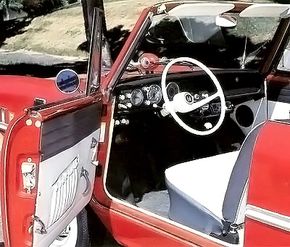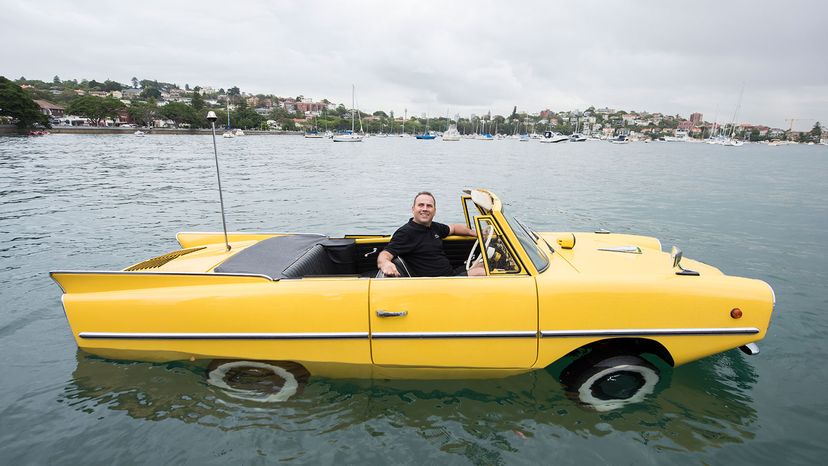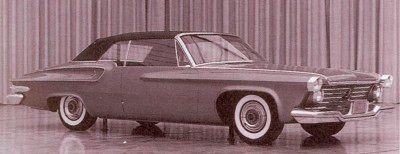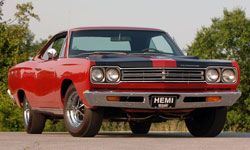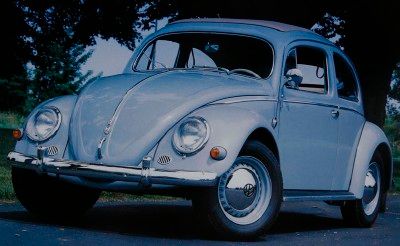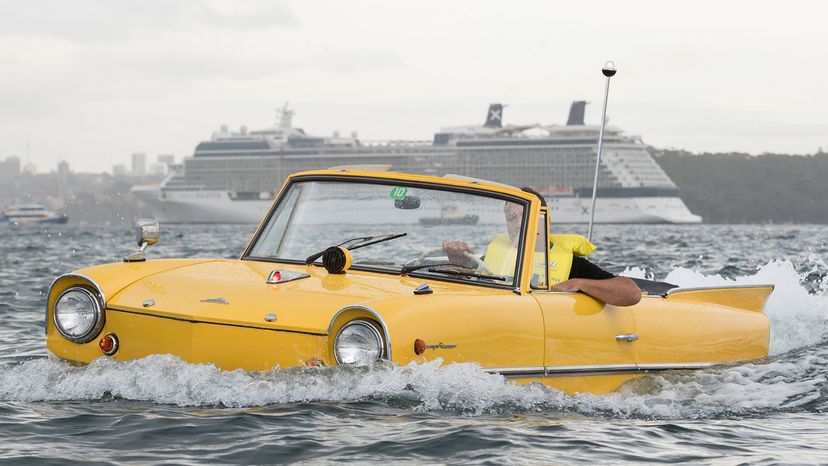
It hardly needs saying that amphibious motor vehicles like the 1961-1968 Amphicar have not exactly been common over the years. There are several reasons, including certain design compromises dictated by their dual-purpose nature and, typically, a resulting purchase price much higher than that of comparable cars or boats.
But the Amphicar is an exception. Introduced by inventor Hans Trippel at the 1959 Geneva Salon, it saw fairly high production — 3,770 units — over a relatively lengthy period: eight years. And it was successfully marketed in both Europe and the United States at a price that was surprisingly reasonable for a machine that could do almost everything but fly.
Advertisement
Unfortunately, that price was so reasonable that the venture could never fly very far, but it has left us with an appealingly versatile little vehicle that had come into its own as a bona fide collectible within two decades.
The Amphicar may have been the most commercially successful amphibian but it was far from the first. That honor likely goes to a 20-ton steam-powered monster built by Oliver Evans of Philadelphia way back in 1803. That same year, he drove his alarming contraption over a mile and a half of the city's streets and down to the banks of the Delaware River.
Of course, he didn't stop at the water's edge but drove right in and went to work. This work was accomplished by a dredge mounted on the wide-beamed, scow-like body.
Christened "Orukter Amphibolus," this vehicle ably fulfilled Evans' contractual assignment, which was to dredge space for a number of the Quaker City's first docks in what was to become a major harbor. Little more was heard of it after that.
More than a century later — in 1917, to be exact — William Mazzei of Seattle, Washington, designed an amphibious car of more normal size and put together a company to produce it. Called "Hydrometer," a name more appropriate for a measuring instrument than a car, it was powered by a conventional internal-combustion engine supplied by Continental.
Contemporary accounts describe the Hydrometer (some sources list the name as "Hydromotor") as looking more like a boat than a car, but it did have four wheels and was said to have been capable of 60 mph on land and 25 mph on water, the latter no doubt exaggerated.
That same year, George Monnot of Canton, Ohio, announced his "Hydrocar," a car/truck combination with a steering wheel at each end and a four-cylinder Hercules engine.
Monnot tried to interest the U.S. Army in his rig for all-purpose use in World War I, but it was rendered unnecessary by the end of hostilities the following year. By that time there was no money left for pursuing the civilian market.
Perhaps the most famous automotive amphibian was the one that did see action, though in a later conflict: World War II. Of course, we're talking about the four-wheel-drive Schwimmwagen derived from the land-only Kübelwagen ("bucket car"), the equivalent to the American Jeep in the army of Nazi Germany's Third Reich.
Both were designed by the renowned Dr. Ferdinand Porsche along principles he'd established with the "people's car" project so beloved by Adolf Hitler. Though neither vehicle was a "Volkswagen" in the strict sense, they're usually considered as such because they were produced at the huge new Wolfsburg factory that Hitler had erected before the war to build the little low-price car we've come to know as the Beetle.
VW thus deserves credit for the first mass-produced amphibian, and the Schwimmwagen was indeed turned out in large numbers during the war years. Some found their way into private hands once peace returned, while others were avidly studied by motor manufacturers on both sides of the Atlantic.
Advertisement
